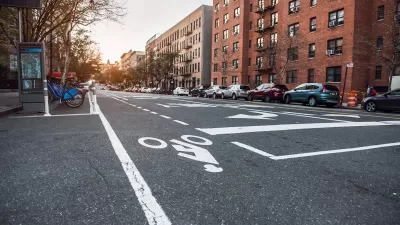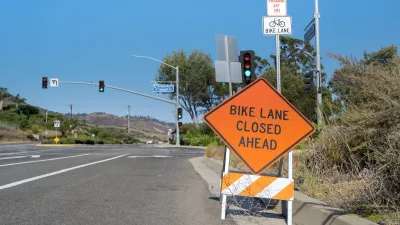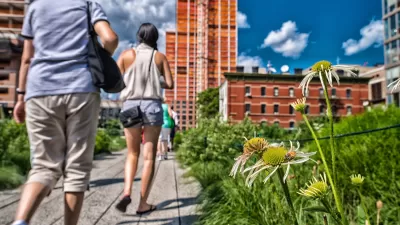The Trump administration is specifically targeting bike infrastructure and other road safety projects in its funding cuts.

Federal funding cuts for programs that supported safe streets and bike infrastructure will likely contribute to increased pedestrian deaths and halt or delay pedestrian safety projects around the country, reports Lois Parshley in Grist.
“These safety concerns were highlighted in a recent report by the Centers for Disease Control and Prevention, which found Americans were 50 percent more likely to die walking in 2022 than in 2013.” Interventions that prioritize safety over traffic speed would help reverse this trend, but the administration appears intent on ending funding for active transportation and road safety efforts such as the BUILD grant and any “funding to advance climate, equity, and other priorities counter to the Administration’s executive orders.”
According to Parshley, “Other funding likely to be caught up in these restrictions include projects within the Active Transportation Infrastructure Investment Program, which supports multimodal travel; the BUILD program, which is designed to meet local or multi-jurisdictional needs; and the Reconnecting Communities Pilot Program, which helps communities harmed by past transportation decisions.”
According to a DOT project manager who spoke to Grist, “It’s not only making people afraid to carry on with good work that was underway, but has a chilling effect on everything we do going forward.”
FULL STORY: The government aims to cut funding for safer streets. Here’s who would be hurt most.

Maui's Vacation Rental Debate Turns Ugly
Verbal attacks, misinformation campaigns and fistfights plague a high-stakes debate to convert thousands of vacation rentals into long-term housing.

Planetizen Federal Action Tracker
A weekly monitor of how Trump’s orders and actions are impacting planners and planning in America.

In Urban Planning, AI Prompting Could be the New Design Thinking
Creativity has long been key to great urban design. What if we see AI as our new creative partner?

Florida Seniors Face Rising Homelessness Risk
High housing costs are pushing more seniors, many of them on a fixed income, into homelessness.

Massachusetts Budget Helps Close MBTA Budget Gap
The budget signed by Gov. Maura Healey includes $470 million in MBTA funding for the next fiscal year.

Milwaukee Launches Vision Zero Plan
Seven years after the city signed its Complete Streets Policy, the city is doubling down on its efforts to eliminate traffic deaths.
Urban Design for Planners 1: Software Tools
This six-course series explores essential urban design concepts using open source software and equips planners with the tools they need to participate fully in the urban design process.
Planning for Universal Design
Learn the tools for implementing Universal Design in planning regulations.
Gallatin County Department of Planning & Community Development
Heyer Gruel & Associates PA
JM Goldson LLC
City of Camden Redevelopment Agency
City of Astoria
Transportation Research & Education Center (TREC) at Portland State University
Jefferson Parish Government
Camden Redevelopment Agency
City of Claremont





























